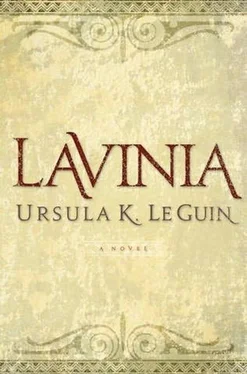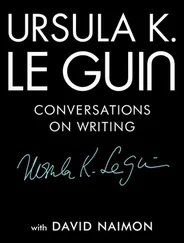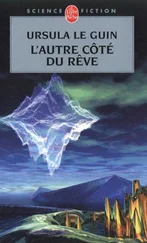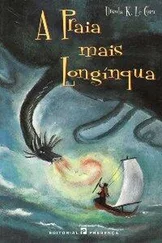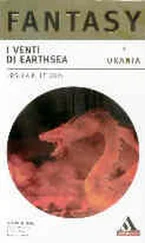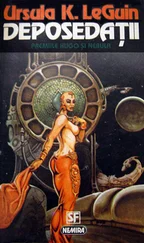Only sometimes my soul wakes as a woman again, and then when I listen I can hear silence, and in the silence his voice.
THE SETTING, STORY, AND CHARACTERS OF THIS NOVEL ARE based on the last six books of Vergil’s epic poem the Aeneid.
For a long time anybody in Europe and the Americas who had much education at all knew Aeneas’ story: his travels from Troy, his love affair with the African queen Dido, his visit to the underworld were shared, familiar references and story sources for poets, painters, opera composers. From the Middle Ages on, the so-called dead language Latin was, through its literature, intensely alive, active, and influential. That’s no longer true. During the last century, the teaching and learning of Latin began to wither away into a scholarly specialty. So, with the true death of his language, Vergil’s voice will be silenced at last. This is an awful pity, because he is one of the great poets of the world.
His poetry is so profoundly musical, its beauty is so intrinsic to the sound and order of the words, that it is essentially untranslatable. Even Dryden, even FitzGerald couldn’t capture the magic. But a translator’s yearning to identify with the text cannot be repressed. This is what urged me to take some scenes, some hints, some foreshadowings from the epic and make them into a novel—a translation into a different form —partial, marginal, but, in intent at least, faithful. More than anything else, my story is an act of gratitude to the poet, a love offering.
There have been one or two attempts to “finish” the Aeneid, justified by arguments that Vergil himself thought it incomplete (when he knew he was dying, he asked that it be burned), and that it ends with shocking abruptness in a scene that seems to put Aeneas’ famous piety, even his heroic victory, in question. I think the poem ends where Vergil wanted it to end. This story is in no way an attempt to change or complete the story of Aeneas. It is a meditative interpretation suggested by a minor character in his story—the unfolding of a hint.
The Trojan War was probably fought in the thirteenth century bc; Rome was founded, possibly, in the eighth, though there is no proper history of it for centuries after that. That Priam’s nephew Aeneas of Troy had anything at all to do with founding Rome is pure legend, a good deal of it invented by Vergil himself.
But Vergil, as Dante knew, is a trustworthy man to follow. I followed him into his legendary Bronze Age. He never led me astray.
Sometimes I was puzzled, however. He was familiar with Latium (the region southwest of Rome), and I wasn’t; but some of his geography seemed askew, or deliberately misty. Lavinium is now Pratica di Mare, that’s all right; but at first it seemed a waste of time to try to be exact about the location of Laurentum, or the forest of Albunea, which couldn’t be the sulfur springs near Tibur, now Tivoli, which Horace and other writers called Albunea; and the river Numicus or Numicius was as elusive in location as in name. But as a novelist I was uncomfortable not knowing how far my characters would have to walk from Laurentum to the mouth of the Tiber, how long it would take to drive a mule cart from Lavinium to Alba Longa. My friend the geomancer George Hersh, after burrowing into ancient sources on the Internet, found the modern map I needed for places and distances: Lazio, part of the Grande Carte Stradale d’ltalia. There, in large scale, near Croce di Solferato, is Vergil’s Albunea, properly convenient to Laurentum; and there it is, Rio Torto, the river that must have been the Numicus… It was deeply touching to me to find these places of legend on a highway map of the Touring Club Italiano. On the map and in the myth, they are real.
A later, equal joy was discovering Vergil’s Latium, by Bertha Tilly, who walked all over the region in the 1930s with a keen mind, a sharp eye, and a Brownie camera. Tilly gave me infinite pleasure by rearranging some and confirming most of my sketch map. She photographed shepherds’ huts built as they had been built for twenty-seven centuries. And she showed me how the coastline has changed at the mouth of the Tiber, and where the Trojans must have landed, sailing up the Tiber at dawn into the dark forest full of wings and birdsong.
My desire was to follow Vergil, not to improve or reprove him. But Lavinia herself sometimes insisted that the poet was mistaken—about the color of her hair, for instance. And being a novelist and wordy, I enlarged upon and interpreted and filled in many corners of his spare, splendid story. But I left out a good deal, too. The palaces and tiaras, the hecatomb sacrifices, the Augustan magnificence he gave to his setting, I reduced to a more plausible poverty. The Homeric use of quarrelsome deities to motivate, illuminate, and interfere with human choices and emotions doesn’t work well in a novel, so the Greco-Roman gods, an intrinsic element of the poem, are no part of my story.
Free of the borrowed literary machinery of the pantheon, and authorised by some respectable scholars of religion, I found my characters following the sacred domestic practices of that profoundly religious people the Romans. Such ways of worship were centuries old in Vergil’s day, and continued to exist in country places all through the Republic and the Empire, until the multiplication of imported deities and Christian intolerance finally suppressed them. “Pagan,” meaning a worshipper of the gods, is a Christian usage; originally, pagans were simply the people who lived on the pagus, the Roman farm: hayseeds. Such country folk clung longest to the old, local, earth-deep religion. The song sung at Ambarvalia in my story is probably the oldest Latin poem known, yet it was written down as late as AD 218, by which time it was immemorially ancient and perhaps almost as strange to those who sang it as it is to us.
Enos Lases iuvate
neve luae rue Marmar sins incurrere in pleores
satur furere Mars limen sali sta berber
semunis alternei advocapit conctos
enos Marmor iuvato
triumpe triumpe triumpe triumpe triumpe
Who were the people in the foothills and lowlands of Latium in the eighth century bc—the Latins, the ancestral Romans? More knowledge than we used to have about them is coming to light, but still, I’m glad that my story is set in Vergil’s semi-mythological, nonhistorical landscape, defined by a poet, not by the patient uncertainties of archaeologists. As for the historians, this early period is almost entirely frustrating to them. There is no reliable history of the Latins or of Rome itself until surprisingly late, well into the second century BC. The Roman historian Livy (who lived at about the same time as Vergil) is wonderful reading, but what he had to work with was almost entirely legend, myth, guesswork, tradition, contradiction, lists of festivals, names of consuls, fragments of enigmas; and we have less than he did, though our archaeology is more reliable.
Rome itself was probably a Latin settlement, almost certainly taken over for a while by the Etruscans and much influenced by them. But nobody is perfectly certain who the Etruscans were, though they left treasures of art and architecture wherever they settled, and we can decipher a certain amount—not all—of their language. They mostly lived north of the Tiber, in a league of twelve city-states that may have been considerably in advance of the Latins, culturally and economically.
The Latins and their neighboring peoples such as the Sabines, Aequians, Hernici, Volscians, all speakers of related Indo-European languages, had been migrating down from the north since before 1000 BC.
There was room for them. A great deal of Italy, back then, was forest. Where man goes, trees die; or, to paraphrase Tacitus, we make a desert and call it progress. By 800 BC the Latin-speaking people had moved into Latium, cutting trees and clearing their farm and pasture lands; and they may have been, as in my story, settled farmers and villagers (pagans), grouped by tribe or people under chiefs or kings. They probably weren’t anywhere near as comfortable and civilised as I portray them. What is certain is that they were farmer-warriors, who spent a lot of time fighting each other. The Latins went on doing so with increasing success, for centuries, till they ruled all western Europe and quite a lot of Africa and Asia.
Читать дальше
